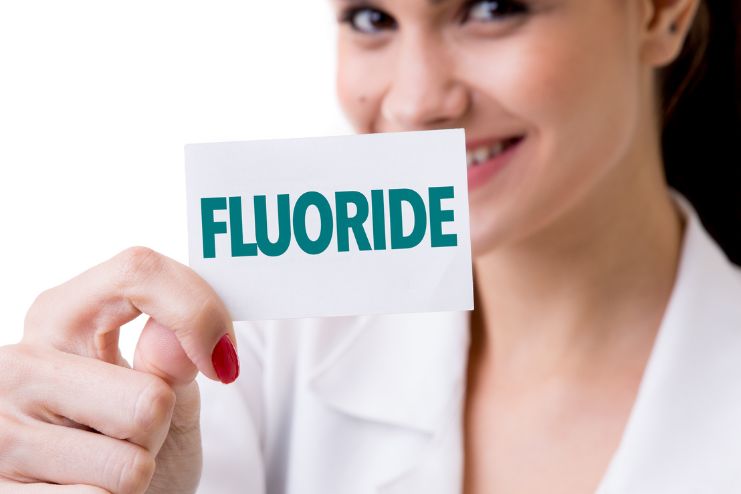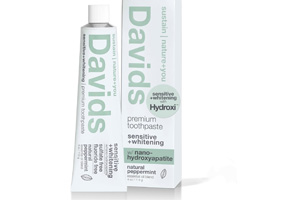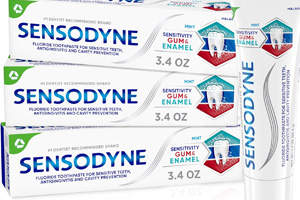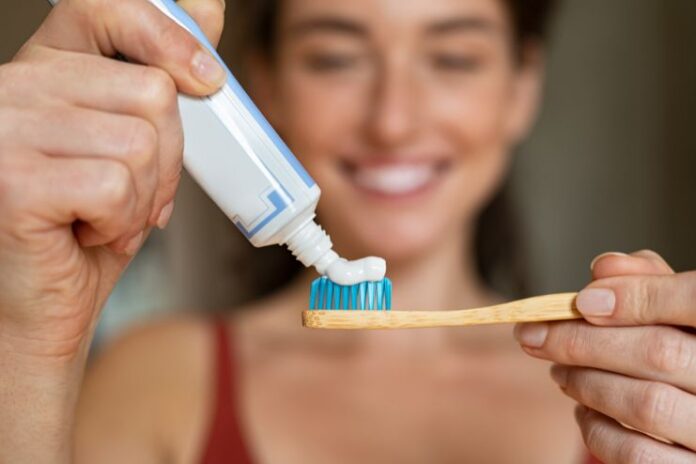Affiliate Disclaimer
Some links in this article are affiliate links. We may earn a small commission if you make a purchase through these links, at no extra cost to you. We only recommend products we find useful to our readersWhen it comes to toothpaste, most of us grab a tube without a second thought. But have you ever wondered what’s in it, and which ingredient is best for your teeth?
For years, fluoride has been the gold standard for cavity prevention. But now, hydroxyapatite is gaining attention as a natural alternative. So, what’s the difference? Which one works better? And most importantly, which one should you be using?
Let’s break it down in a way that’s simple, science-backed, and easy to understand.
Read More: 7 Drinks Good For Your Teeth (6 Drinks That Are Bad)
What Is Fluoride?

Fluoride is a naturally occurring mineral found in water, soil, and certain foods. Its primary function in oral health is to strengthen tooth enamel, making it more resistant to acid attacks from bacteria. Fluoride helps strengthen tooth enamel by promoting remineralization, a process where calcium and phosphate are redeposited into the tooth enamel.
These minerals need to be redeposited as they wear out due to acid exposure. We can do so by using a few common fluoride sources, such as fluoride toothpaste, fluruidated drinking water, and professional dental treatments.
What Is Hydroxyapatite?
Hydroxyapatite is a naturally occurring calcium form that makes up about 97% of tooth enamel and 70% of dentin, the layer under the enamel. In toothpaste products, synthetic hydroxyapatite replicates this natural mineral form.
When applied in oral care, hydroxyapatite acts by filling microscopic scratches and gaps in the enamel, directly bonding with the tooth’s surface to repair and fortify it. This action not only helps remineralize but also decreases tooth sensitivity.
Read More: Best Oral Care Products for Healthier Teeth and Gums (Dentist-Approved Essentials).
Fluoride vs. Hydroxyapatite: Which Toothpaste is Right for You?

Toothpaste is more than just a minty-fresh part of your morning routine, it helps keep your teeth strong and cavity-free. With shelves packed with so many choices, the debate ultimately centers on two main ingredients: fluoride and hydroxyapatite.
For years, fluoride has been the default choice for fighting cavities. It’s in most commercial toothpastes and even present in tap water in many locations. But now, hydroxyapatite is a natural, fluoride-free option that promises to remineralize teeth just as effectively.
So, which ingredient works better? Which is safer? And how do you choose the one most suited for you?
Let’s compare the two ingredients to make the perfect choice.
Mechanism of Action:
- Fluoride: It fortifies enamel by enhancing the natural process of remineralization, increasing mineral deposition into the enamel.
- Hydroxyapatite: Hydroxyapatite goes directly into the enamel, repairing microscopic defects and restoring the surface of the tooth.
Effectiveness:
Both hydroxyapatite and fluoride are effective in preventing cavities and enamel erosions. Fluoride has a long history, and a large body of research has confirmed its effectiveness. Hydroxyapatite is relatively new but effective in remineralizing enamel and preventing tooth decay.
Safety Concerns:
- Fluoride: Excessive exposure to fluoride, particularly in children, can result in dental fluorosis, a condition where the teeth become discolored. High levels of fluoride have also been linked to neurodevelopmental effects, though these typically occur at concentrations higher than those found in fluoridated water and toothpaste.
- Hydroxyapatite: As a biocompatible substance that occurs naturally in teeth, hydroxyapatite is safe with no toxicity and thus can be used by people looking for fluoride-free options.
Suitability for Different Age Groups:
Both fluoride and hydroxyapatite products are suitable for different age groups. Due to its non-toxic nature, hydroxyapatite is particularly beneficial for young children, who may accidentally swallow toothpaste, and individuals with fluoride concerns.
Scientific Evidence Supporting Fluoride And Hydroxyapatite
- Fluoride: Fluoride’s effectiveness has been proven through decades of studies and the overwhelming support of dental professionals.
- Hydroxyapatite: As a newer alternative in the market, Hydroxyapatite has been studied to show its effectiveness in remineralizing enamel and stopping cavities.
Pros and Cons of Fluoride Toothpaste
Fluoride has been a staple ingredient in toothpaste for decades, given its demonstrated efficacy in making teeth stronger and warding off cavities. It’s a common ingredient in toothpaste, approved by dental associations and supported by an overwhelming volume of studies.
But with advantages come disadvantages, and fluoride has some critics despite its effectiveness.
Pros: Fluoride is very effective at preventing cavities by making tooth enamel stronger. It has been researched well and is still the most recommended by dentists. Fluoridated toothpaste is also easily available and inexpensive and, therefore, commonly used.
Cons: Some individuals worry about potential side effects, especially when swallowed in excess. Overexposure to fluoride, particularly in children, can result in fluorosis, which leads to tooth discoloration or white spots. There are also toxicity concerns if large quantities are consumed over a long period. Others choose not to use fluoride at all because of individual health beliefs.
Read More: White Spots on Teeth – All You Need to Know
Pros and Cons of Hydroxyapatite Toothpaste
Hydroxyapatite is becoming increasingly popular as a natural, fluoride-free option. Since it is the same mineral found in tooth enamel, it helps repair and remineralize teeth in a manner that is very similar to the body’s natural process. It is widely used because it is non-toxic and harmless if swallowed, which makes it a very appealing product for children and those seeking fluoride-free toothpaste.
Pros: Hydroxyapatite is biocompatible, which means it naturally cooperates with the body without any risk of toxicity. It remineralizes enamel well and helps protect teeth from cavities. It is also swallow-safe, so it is a wonderful option for children or for those who are sensitive to fluoride.
Cons: While the science behind hydroxyapatite shows promise, it lacks the decades of extensive research that supports fluoride. It is also less widely available, with fewer companies producing hydroxyapatite toothpaste. It is a costlier option than the standard fluoride toothpaste.
Which One Should You Choose?

The choice between fluoride and hydroxyapatite toothpaste is largely based on preference and dental care requirements. Patients with a history of cavities and no concerns about fluoride can use conventional fluoride toothpaste as a safe alternative.
Those seeking a fluoride-free, naturally based toothpaste, particularly children or individuals with specific health concerns, can opt for hydroxyapatite toothpaste. A consultation with a professional dentist can provide recommendations tailored to your oral health needs.
Read More: 8 Home Remedies to Remove Tartar and Plaque from Teeth
Dentist Recommendations and Scientific Evidence
Dental practitioners have loved fluoride toothpaste for years due to their proven anti-cavity properties. However, with new studies on hydroxyapatite, this is a possible substitute that can provide similar benefits in enamel remineralization and cavity protection. As more evidence mounts, more dentists can start recommending hydroxyapatite toothpaste, especially for those who want fluoride-free alternatives.
Here are some of our favorite and most loved toothpastes:
1. Davids Hydroxi Fluoride-Free Toothpaste for Remineralizing Enamel

2. Sensodyne Sensitive Gum and Enamel Protection Fluoride Toothpaste

Final Thoughts
Both fluoride and hydroxyapatite toothpaste work well to produce healthy, strong teeth. Fluoride enjoys decades of evidence backing its efficacy in preventing cavities, whereas hydroxyapatite provides a natural, fluoride-free option with promising enamel repair and remineralization benefits.
The choice is up to you, and it depends on your dental needs and preferences. Fluoride toothpaste is still very reliable if you want a tried and tested, widely available option. If you want a natural alternative, particularly for young children or those with concerns about fluoride, hydroxyapatite is an option to consider.
Regardless of what toothpaste you use, regular oral hygiene practices of brushing twice a day, flossing, and dental check-ups make your smile bright and healthy!
In this Article


















